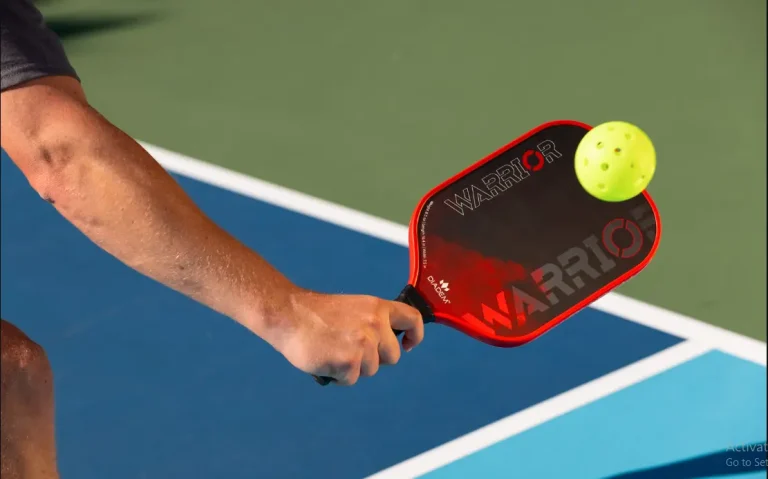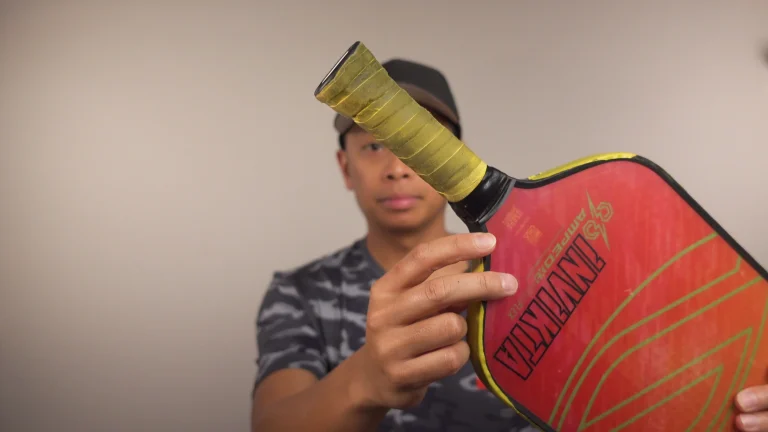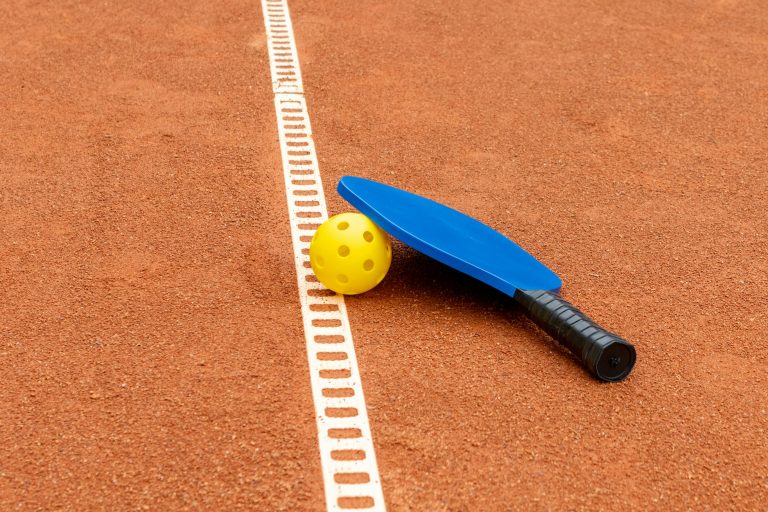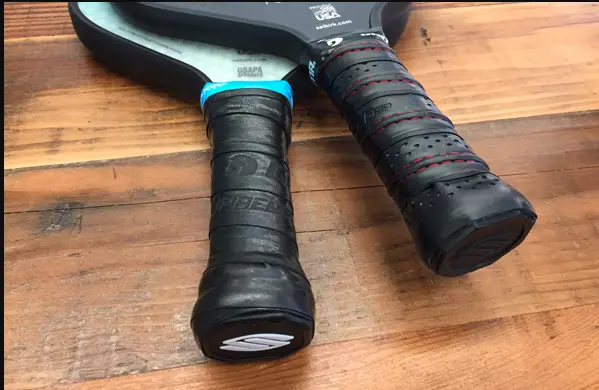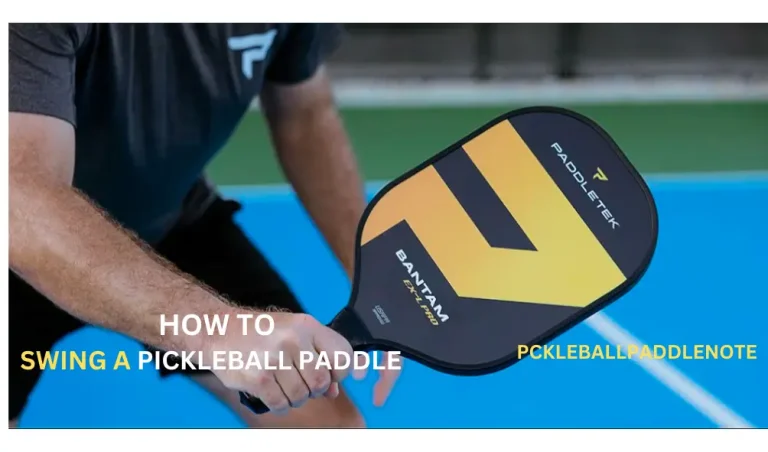Ways How To Tell If Pickleball Paddle is Dead
Pickleball, a fast-growing sport combining elements of tennis, badminton, and ping pong, has garnered a dedicated following worldwide. Central to this game is the paddle, a crucial piece of equipment that significantly influences player performance. Over time, however, even the most durable pickleball paddles may lose effectiveness, making players wonder if it’s time for a replacement.
Knowing if the pickleball paddle is dead and not functioning correctly is essential. This article will help you understand the signs of wear and tear on your pedals. Also, we’ll discuss some simple tips for keeping your paddles playable for a long time and why playing with old paddles is not a good idea. Once you’ve read this article, you’ll know when you need new paddles.
What is a Dead Pickleball Paddle
When a pickleball paddle dies, it no longer performs at its best. Wear and tear, lost responsiveness, diminished power, or reduced accuracy can all be signs of deterioration. A dead pickleball paddle doesn’t perform as well as it once did. A dead paddle can weaken shots, lack spin, or consistently miss targets. Knowing when to replace a pickleball paddle is crucial to maintaining peak performance on the court.
How to Tell if Pickleball Paddle is Dead
If you are checking your pickleball paddle, it means looking at it closely and testing how well it works. First, you should look closely at the device and see if there’s any visual damage, such as scratches or dents, and then play a game to see how it performs. Look for signs of wear and tear, such as scratches or peeling. You can test its performance by seeing how it responds, how the weight is balanced, and how it feels during play. A lot of use and frequent hitting are also essential factors to consider. By doing these checks regularly, you can ensure your paddle is doing well and determine if it needs any fixes or if it’s time to get a new one.
Visual Inspection
Visual inspection involves examining the pickleball paddle for any visible signs of wear and tear or damage. This inspection typically includes scrutinizing the paddle’s surface for scratches, chips, dents, or other physical damage. Additionally, players may inspect the edge guard, which is a protective layer around the perimeter of the paddle, for any signs of deterioration or separation.
By visually inspecting the paddle, players can identify any visible indicators that may suggest the paddle is reaching the end of its lifespan and needs to be replaced to maintain optimal performance on the court.
Sound Test
The sound test involves tapping or lightly striking the pickleball paddle to assess its acoustics. Players can gather valuable information about its internal condition by listening to the sound produced when the paddle is tapped. A healthy pickleball paddle produces a crisp and lively sound, indicating structural integrity and responsiveness.
However, a dead paddle may produce a dull or muted sound, suggesting internal damage or deterioration. Performing a sound test allows players to detect any changes in the paddle’s acoustics, helping them determine if it’s time to consider replacing the paddle for better performance on the court.
Bounce Test
Drop it and see how it bounces to check if your pickleball paddle is still in good working order. If a paddle isn’t working well, it may bounce unevenly or have fewer bounces than it should. The bounce test involves dropping the pickleball paddle onto a hard surface from a short distance and observing its rebound. A paddle in good condition will typically bounce back with energy and resilience, indicating its structural integrity and responsiveness.
However, a dead paddle may exhibit a lackluster bounce, with minimal energy transfer and reduced elasticity. Performing the bounce test allows players to assess the paddle’s flexibility and responsiveness, providing valuable insight into its overall condition. If the paddle fails to bounce back with vigor, it may be a sign that it’s time to consider replacing it to maintain optimal performance on the court.
Grip Test
Ensure that the grip on your pickleball paddle is in satisfactory condition. Ensure it is firm and comfortable, and check for signs of wear, such as visible cracks and tears. Your gameplay may be negatively affected if the grip shows deterioration or discomfort. Perform a visual examination of the grip, looking for cracks, tears, and unusually smooth areas. Perform a gentle squeeze to ensure the grip maintains a consistent and secure hold during gameplay.
Check its comfort level during active play to remain stable without uncomfortable shifts. Based on these concise evaluations, you can determine whether a new grip is needed or if adjustments need to be made to enhance your playing experience.
What Causes Deadness in Pickleball Paddles?
Deadness is the loss of responsiveness and “pop” in a pickleball paddle. Several factors contribute to this phenomenon, ranging from material quality to environmental conditions and frequency of use.
Material Quality
The quality of materials used in paddle construction plays a significant role in determining its performance and durability. High-quality paddles typically feature advanced composite materials that balance power, control, and durability.
Core Material
The core material of a paddle affects its responsiveness and feel. Paddles with polypropylene, aluminum, or Nomex cores are known for their lively performance, while those with softer cores may experience deadness over time.
Surface Wear and Tear
Regular use can cause wear and tear on the surface of a pickleball paddle, leading to decreased performance. Scratches, dents, and abrasions can affect the paddle’s ability to generate spin and power.
Conclusion
To maintain peak performance, you need to know how to tell if the pickleball paddle is dead. Visual inspection, listening for sounds, assessing the grip, and assessing performance provide valuable insights. When you step onto the court, discern whether your pickleball paddle is dead or still active. Having a paddle that meets the challenges and victories of the game keeps you well-prepared for success in every match. Play pickleball with a responsive and reliable paddle for a winning edge. Here are the best pickleball paddles for spinning that we recommend you look at if you need more information.

